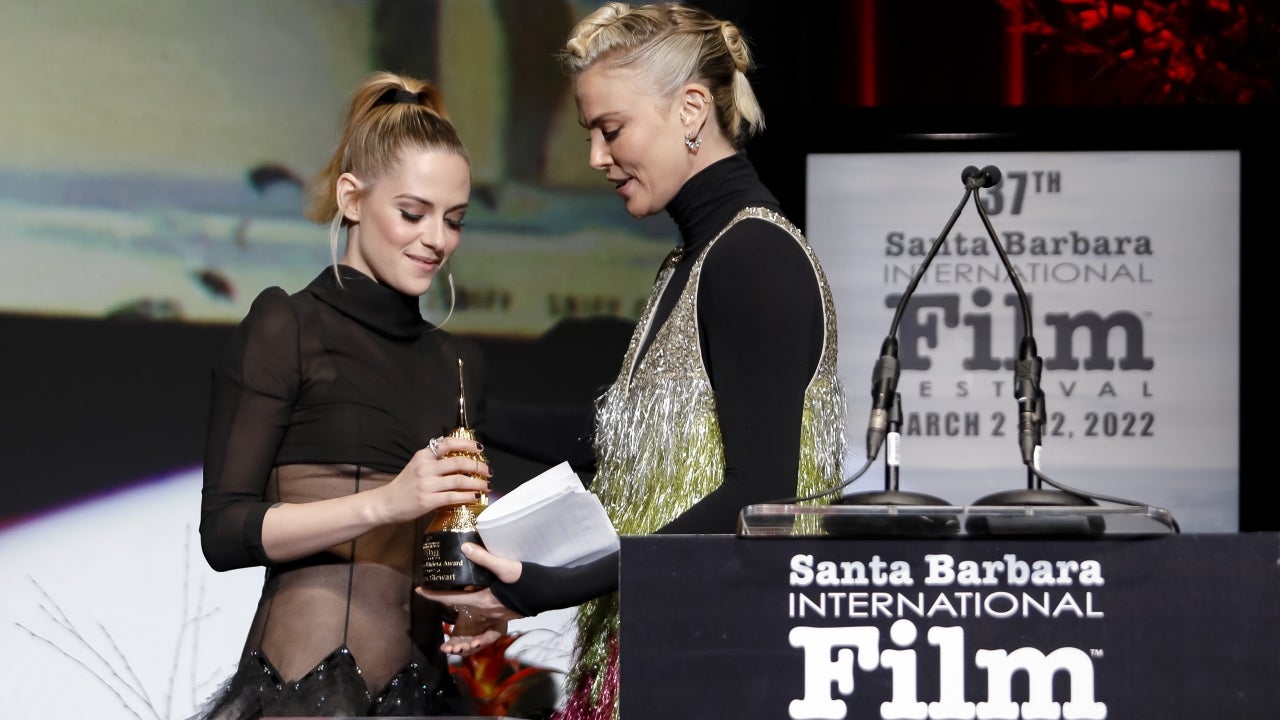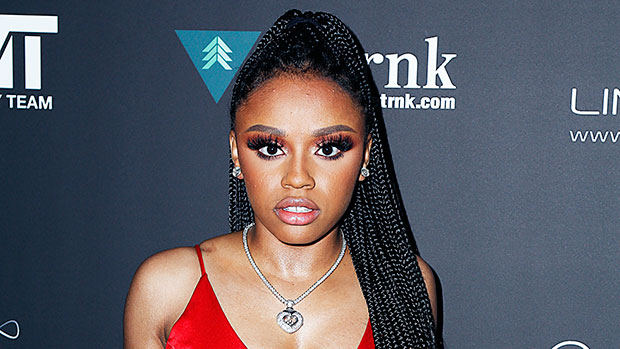SXSW 2022 Women Directors: Meet Iliana Sosa – “What We Leave Behind”
Iliana Sosa is a documentary and narrative fiction filmmaker based in Austin, Texas. Her documentary short “An Uncertain Future,” co-directed with Chelsea Hernandez, premiered at the 2018 SXSW Film Festival, where it won a Jury Award for Best Texas...

Iliana Sosa is a documentary and narrative fiction filmmaker based in Austin, Texas. Her documentary short “An Uncertain Future,” co-directed with Chelsea Hernandez, premiered at the 2018 SXSW Film Festival, where it won a Jury Award for Best Texas Short. She co-produced the Emmy-nominated feature documentary “Building the American Dream” (SXSW 2019), and was field producer for the Emmy-nominated “POV” documentary series “And She Could Be Next.” Sosa is currently an assistant professor in the Department of Radio-Television-Film at UT Austin. “What We Leave Behind” is her first documentary feature.
“What We Leave Behind” is screening at the 2022 SXSW Film Festival, which is taking place March 11-20. Find more information on the fest’s website.
W&H: Describe the film for us in your own words.
IS: “What We Leave Behind” follows my grandfather, Julián Moreno, as he starts building a new house in his rural hometown of Durango, Mexico. From behind the camera, I document the project’s progress and the daily rhythms of his life, drawing out memories from family members as I grapple with how migration and loss have marked all of our lives.
The film is ultimately a kind of love letter to Julián and his homeland. Through voiceover that pairs with imagery of Durango’s landscapes, I reflect on my grandfather’s superstitions, my mother’s journey across the border, and my grandmother’s untimely death when my mom was just a teenager. As I interweave these different threads, I’m able to build relationships and mutual understanding with my relatives, unearth buried memories, and ultimately piece together a fragmented family history. The film honors my family on both sides of the border and tells their story — the story of people we rarely see onscreen.
W&H: What drew you to this story?
IS: Growing up, my grandfather would come visit my family and me in El Paso, Texas, every month. I have vivid memories of his trips. He would spend hours and hours traveling by bus across the border from his hometown in Durango, Mexico, then visit for just a day, bringing jamoncillo, chile, and Mexican candy as gifts. He would smell of earth, his hands weathered from working the land all of his life. My entire family has made a living by the labor of their hands. They have worked as housekeepers, construction workers, and nannies. I’m the first in my family to go to college — let alone to become an artist — and my awareness of that privilege is baked into “What We Leave Behind’s” self-reflexive approach.
My original intention in making this film was to explore my grandfather’s work as a bracero and to bring awareness to a period of United States history that many Americans don’t know about. The word “bracero” means “one who works with his arms.” Braceros were agricultural workers the U.S. brought from Mexico during a temporary WWII labor shortage. While in the U.S., they were notoriously exploited for their manual labor and then forcefully repatriated when American xenophobia began to escalate. I wanted to learn about my grandfather’s experiences as a bracero: his realities living and moving between countries, and his efforts to unite a family despite legal, financial, geographic, and cultural barriers.
As my grandfather began construction on a new house in Durango — intended for the whole family, on both sides of the border — the project’s focus and approach shifted to something more personal. The dynamics around this house allowed me to explore how migration has affected our family’s bonds and shaped my identity. It also prompted me to reflect on my emotional and cultural experiences as part of a diaspora. Through the process of filmmaking, I was able to build a new relationship with my grandfather and his homeland.
W&H: What do you want people to think about after they watch the film?
IS: “What We Leave Behind” explores legacy, loss, and bonds across great distances. In light of the pandemic, I believe those themes are more resonant than ever. My hope is that people who have experienced the loss of a loved one will be able to connect to the film and find some healing. I also hope the film might help us treasure our elders more and appreciate their wisdom, even when it’s hard to parse at first.
W&H: What was the biggest challenge in making the film?
IS: Even though I’m fluent in Spanish, one of my biggest challenges was learning to understand my grandfather’s Durango dialect. It took time for us to understand each other. After years of filming together, we started to develop a common language made up of knowing glances, local sayings I’d learned and come to love, and wry gestures. Beyond difficulties of tackling post-production during the pandemic, these linguistic considerations also affected how we edited: our editor Isidore Bethel speaks Spanish, but we made selections of footage together to ensure I could help translate trickier turns of phrase — sometimes with the help of my mom!
W&H: How did you get your film funded? Share some insights into how you got the film made.
IS: All of the film’s funding has come from grants. I’m incredibly grateful to all of the institutions that have supported me on this journey. The Sundance Institute came onboard in 2018 via their Documentary Development Fellowship, which was an amazing early vote of confidence in the project and in me as an artist. From there, we were able to raise additional funds thanks to the tremendous generosity of Just Films | Ford Foundation, Field of Vision, El Paso Museum and Cultural Affairs Department, Austin Film Society, and UT Austin’s Department of Radio-Television-Film.
We also received creative and strategic support from Catapult Film Fund and the True/False Catapult Rough Cut Retreat, the Gotham Documentary Lab, the Jacob Burns Film Center Creative Culture Residency, the Logan Nonfiction Fellowship, and Ji.hlava’s New Visions Forum. Without these funders and organizations, as well as my producer Emma D. Miller, I would not have been able to make this film.
This is my first feature documentary. As a first-generation Mexican American whose parents have always worked service industry jobs, I don’t fit the traditional profile of a documentary filmmaker, nor have I had resources to self-fund my projects. Without access to grant funding, this film simply would not exist in the form it does today.
W&H: What inspired you to become a filmmaker?
IS: I didn’t encounter filmmaking until I was in college. As a first- and second-year student, I wrote a lot of essays about what it meant to grow up on the border as a Latina. But I thought, “Who is going to read these?” An amazing professor, Dr. Daniel Castro, opened up my eyes to Latin American and foreign cinema. He showed us films I’d never heard of before, like “Central Station” and “Pixote.”
After a semester abroad in Buenos Aires, I started to toy around with the idea of pursuing filmmaking as a way to explore similar questions about place and identity, but with the potential for a different kind of reach. And it was Dr. Castro who encouraged me to apply to UCLA for film school.
W&H: What’s the best and worst advice you’ve received?
IS: Worst advice: If you have a job offer, take it — you can’t afford to miss an opportunity.
Best advice: Take on and pour your creative efforts into projects that inspire and move you.
W&H: What advice do you have for other women directors?
IS: Don’t wait for others to give you the green light. Greenlight yourself, even without funding or institutional validation. Do it for yourself, first and foremost. I worked on “What We Leave Behind” for several years without any form of industry support — during that time, I relied on supportive friends for encouragement, I borrowed cameras and sound equipment, and I asked for favors to get the project off the ground.
W&H: Name your favorite woman-directed film and why.
IS: Agnés Varda’s “Vagabond.” The cinematography perfectly depicts the enigmatic nature of the protagonist, Mona. Generally, I’m drawn to complex and nuanced female characters, and Varda’s are true-to-life and multi-layered. Mona is a fiercely independent drifter; I’ve seen plenty of men play that role throughout film history, but rarely have I seen a female protagonist adeptly navigate those kinds of tough experiences. “Vagabond” is from 1985, but it spoke to me decades later, and Varda’s hybrid documentary form has since inspired my own filmmaking.
W&H: How are you adjusting to life during the COVID-19 pandemic? Are you keeping creative, and if so, how?
IS: I started teaching at UT Austin during the pandemic, and that has proven to be a saving grace for my creativity. I’d been feeling burnt out and isolated during the first months of the pandemic. I was really missing the travel and sense of community that had nourished and inspired me in the past. But I’ve found that being in the classroom energizes me, too, and my students push me to think outside the box on a daily basis. I see connections between their enthusiasm and my own creative work.
I’ve also been working on an omnibus narrative feature project with four other Latina filmmakers in Texas: Chelsea Hernandez, Sharon Arteaga, Lizette Barrera, and Jazmin Diaz. Collaborating with these incredible artists has similarly been a source of inspiration and creativity during the pandemic. During the height of COVID, we would meet weekly via Zoom to discuss our ideas for the project; this energy gave me so much hope during those difficult times.
W&H: The film industry has a long history of underrepresenting people of color onscreen and behind the scenes and reinforcing — and creating — negative stereotypes. What actions do you think need to be taken to make it more inclusive?
IS: Industry gatekeepers should more adequately represent the members of our filmmaking community. I also believe in financially supporting BIPOC artists in particular. Many of us otherwise would have no chance to make films, at least not on a scale where they’re able to reach broad audiences. And when we wield power — financial, creative, or professional — we need to ensure that we’re engaging it in line with our own ethical and artistic priorities.
When I received funding for the project and was able to bring on collaborators, I was deliberate about whom I worked with: women, BIPOC, and LGBTQ artists from historically underrepresented communities. These filmmakers all had an incredible artistic impact on the project: cinematographers Judy Phu and Monica Wise — and Mina Kim Fitzpatrick and Laura Bustillos Jáquez, who helped on a few shoots; sound recordist Glenda Charles; sound designer Lena Esquenazi; title and graphic designer Yen Tan; and countless others. I first connected with many of these collaborators thanks to Brown Girls Doc Mafia.
It’s also important for me, as a Latina artist, to challenge myself artistically, ethically, and narratively. It’s easy to fall back on stereotypes, and I believe that putting in the work to avoid them ultimately makes my filmmaking stronger.

 Fransebas
Fransebas 































